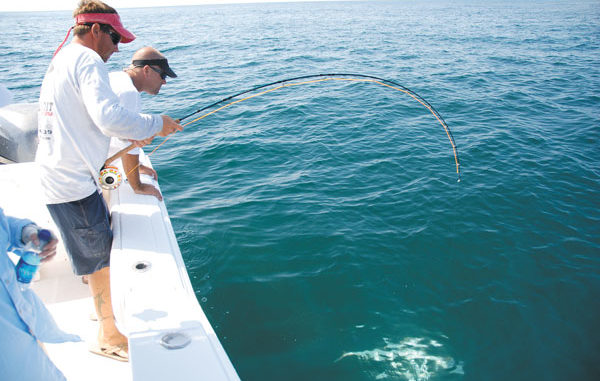
Charleston-area amberjacks on fly-fishing tackle is a test for South Carolina’s most adventurous anglers.
Here’s a short history of the evolution of fishermen.
The dawn of time: Og, sitting along the side of a prehistoric river, sees a fish in the water, uses a rock to sharpen a stick, spears the fish with it, then takes it home to eat raw because he hasn’t got the fire bit down pat yet.
Biblical times: Ogzius, who along with his brother, Uhrl, owns a fishing boat made of papyrus, rows it out into the Sea of Formica, casts a net over some fish and brings them back to their village to eat.
1800s: O. George Weylyn, shop-owner from Ireland, fashions a rod from a piece of Calcutta bamboo, attaches something called a “reel” made by the local watchmaker and casts hand-tied flies in the river on the outskirts of town near where the railroad is being built.
1980: O.G. Wellington III, owner of a brand-new Wellcraft V20 bought for $8,275, and financed at 18.9 percent, purchases eight identical Penn Senator Series outfits after Visa raises his credit limit, has a full tank of $1.30 per gallon gas and spends his weekends checking out LORAN-C numbers and loading the fishbox.
Today: O.G. Wellington IV, known to his friends as “G-4”, wears the latest fashions in sun-protective clothing, including a Buff to cover his face. He shuns conventional tackle and isn’t interested in catching a fish unless it’s on a fly rod. He documents each catch for an on-line Catch-Photograph-Release tournament and uploads each picture, clearly showing this month’s photo identifier, to his Facebook page via iPhone.
Regardless of the path it took to get you here, many of today’s anglers are no longer content to just “fish” for saltwater fish. In today’s world of extreme sports, the challenge of landing large, hard-fighting fish on fly-fishing tackle is definitely drawing a crowd, and there may be no species better suited for this challenge than the greater amberjack. Catching an AJ on the fly is a cross between Archibald Rutledge and Jackass: The Movie. It appears to be a noble pursuit now, but it’ll hurt like hell later.
Other jacks such as lesser amberjack, almaco jacks and jack crevalle can also be found off the South Carolina coast in late summer, but by far the most common, and most sought-after, are greater amberjacks, which migrate up from Florida waters along the eastern seaboard during the summer and may travel as far north as Nova Scotia. Amberjacks are schooling fish as adults but become more solitary the older they get. They are rarely found anywhere other than areas of hardbottom structure and show a special affinity for reefs and wrecks.
Guide Chris Chavis of Finstalker Charters out of Charleston is seeing increasing call volume from fly fishermen who want to try to match wits — and brawn — with offshore and nearshore species such as amberjack, cobia and king mackerel. Accordingly, Chavis (843-509-9972) has devised a two-pronged approach to put his clients on the fish.
“Amberjacks are very competitive and will often come to the surface at the commotion of a boat idling overhead,” he said. “You have to be precise where you lay the fly, but they’re usually pretty cooperative.”
His subsurface approach is to use a tactic he calls “dredging.” He’ll position his boat upcurrent from a wreck or piece of a reef and have his clients cast across the deepwater structure.
“Use a sinking line and drift is over the reef, allowing the line to get down to a 45-degree angle,” said Chavis. “AJs are bad to pull you into the wreck when they get hooked, so you want the fly to suspend over the wreck, then strip like there’s no tomorrow.”
The action of the seemingly “dead” bait coming to life and zig-zagging to the surface is usually enough to engage a curious jack. Once that fish is boated, or at least brought to the surface, the fishing gets easier, as the school typically follows suit.
Chavis’ dockmate and friend, Capt. John Koonce of Shoal Bandit Charters (843-425-2939) has a simpler trick for getting jacks to the surface if they don’t come up on their own. He collects a bait tank full of live menhaden, which are thick as fleas around the Charleston jetties this time of year.
“I take at least five dozen menhaden with me, even on a fly trip,” he said. “We have some less-pressured spots that we don’t have to chum, but if the fish have been pounded by other anglers, we can throw out about a dozen menhaden and get them to the top pretty quick.”
Chavis recommends a 10- to 12-weight fly rod for anglers interested in an offshore fly-fishing trip, and they may want to move up to a 14-weight if they are specifically targeting amberjacks. He said the Ross Reels Momentum LT can’t be beat for the price range, and he spools up with intermediate or sinking fly line based on the weight rod he’s using. A 6- to 9-foot shock tippet is added, and he uses straight fluorocarbon leader in the 65-pound class.
“Streamers and poppers in natural colors is what I have personally seen work best,” he said. “I try to stay away from a lot of flashy stuff, because that tends to flare them off at the last second.”
Where to find amberjacks as the summer winds down is pretty simple. With hot water all around, AJs will inhabit both deep and shallow water wrecks and reefs.
“I’ve found amberjacks on the Lowcountry Anglers reef, which is only three or four miles off Folly Beach and is less than 40 feet deep,” Koonce said. “A good average depth is around 60 feet. You can find that much water on a lot of the local wrecks, like the Charleston 60, Y-73, and the Comanche.”
Both captains agree that a full day of amberjack fly fishing is usually more than one or two anglers can take. Each hookup typically results in a 20- to 30-minute fight, which can wear the anglers out faster than the fish.
“It’s a good half-day stop for two anglers, or if you have four, they can trade off. It’s really easy to pick off the next fish when another angler has one next to the boat,” Koonce said.
“I usually put one on the bow of my boat and one on the back so they don’t risk tangling lines,” said Chavis. “The bad thing with three or four anglers is when you get multiple hookups and you have fish running all around the boat. It can cause a panic, but it’s really pretty exciting to see.”

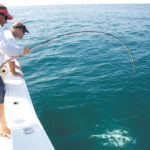
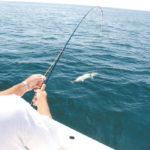
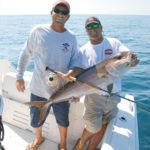
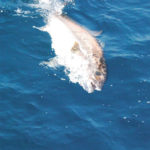
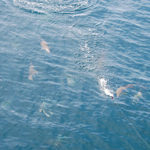
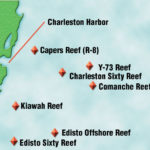
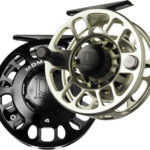



Be the first to comment